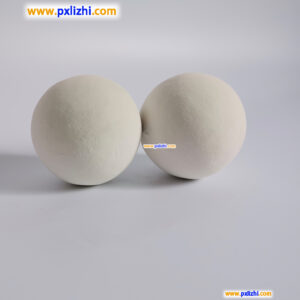
# Inert Ceramic Balls in Industrial Applications
## Introduction to Inert Ceramic Balls
Inert ceramic balls are widely used in various industrial applications due to their excellent chemical stability, high mechanical strength, and resistance to extreme temperatures. These small spherical ceramic pieces play a crucial role in processes where chemical inertness and thermal stability are paramount.
## Key Properties of Inert Ceramic Balls
### Chemical Inertness
One of the most valuable characteristics of inert ceramic balls is their resistance to chemical reactions. They remain stable when exposed to acids, alkalis, and organic solvents, making them ideal for use in corrosive environments.
### Thermal Stability
These ceramic balls can withstand temperatures up to 1800°C (3272°F) without losing their structural integrity. This property makes them suitable for high-temperature applications in various industries.
Keyword: inert ceramic ball
### Mechanical Strength
With high compressive strength and excellent wear resistance, inert ceramic balls maintain their shape and functionality even under significant pressure and abrasive conditions.
## Common Industrial Applications
### Catalyst Support in Petrochemical Industry
Inert ceramic balls serve as excellent catalyst supports in petroleum refining and chemical processing. They provide a stable base for catalysts while ensuring proper gas or liquid distribution.
### Packing Material in Towers
These ceramic balls are commonly used as tower packing in distillation, absorption, and stripping columns. Their spherical shape promotes efficient mass transfer while minimizing pressure drop.
### Heat Storage Media
In thermal processes, inert ceramic balls function as heat storage media due to their high heat capacity and thermal conductivity. They help maintain consistent temperatures in industrial furnaces and reactors.
### Grinding Media
In some applications, inert ceramic balls serve as grinding media in ball mills, especially when processing materials that require contamination-free grinding.
## Advantages Over Alternative Materials
Compared to metal or plastic alternatives, inert ceramic balls offer several distinct advantages:
- Superior corrosion resistance
- Higher temperature tolerance
- Longer service life
- Lower maintenance requirements
- Better chemical purity
## Selection Considerations
When choosing inert ceramic balls for industrial applications, several factors should be considered:
Size and Density
The diameter and density of the ceramic balls should match the specific requirements of the application, affecting flow characteristics and surface area.
Material Composition
Different alumina content (typically 92-99%) affects the balls’ properties, with higher alumina content offering better performance in extreme conditions.
Surface Characteristics
The surface smoothness and porosity can impact performance in certain applications, particularly those involving catalysis or filtration.
## Maintenance and Handling
While inert ceramic balls are durable, proper handling and maintenance can extend their service life:
- Store in dry conditions to prevent moisture absorption
- Handle with care to avoid chipping or cracking
- Regularly inspect for signs of wear or contamination
- Clean periodically to remove accumulated deposits
## Future Trends
The demand for inert ceramic balls continues to grow as industries seek more efficient and environmentally friendly solutions. Advances in ceramic technology are leading to:
- Improved formulations for even higher temperature resistance
- Development of specialized coatings for enhanced performance
- More precise manufacturing for consistent quality
- Expansion into new industrial applications
## Conclusion
Inert ceramic balls have become indispensable components in numerous industrial processes. Their unique combination of chemical inertness, thermal stability, and mechanical strength makes them superior to many alternative materials. As industrial processes become more demanding and sophisticated, the role of inert ceramic balls is likely